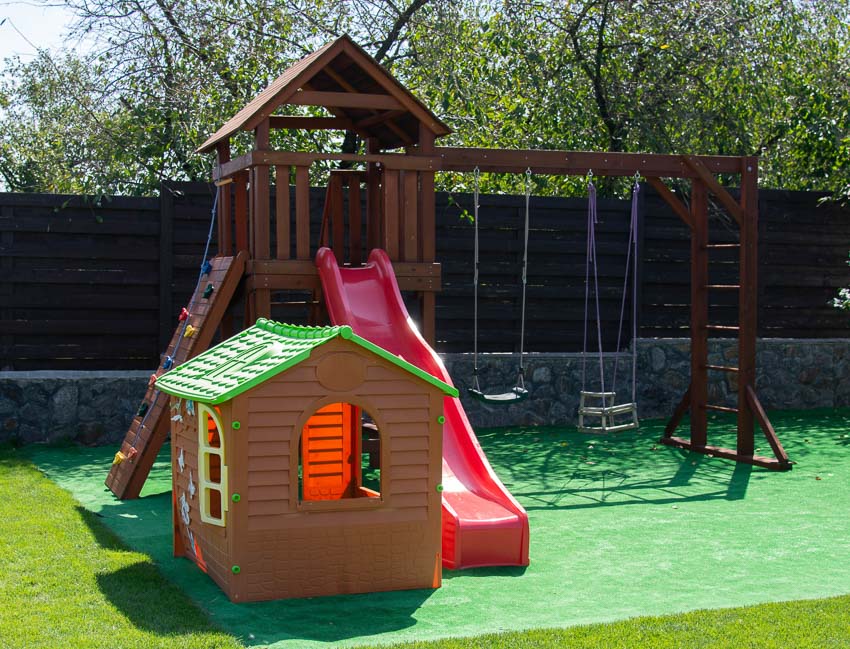Children go from toddlers to teens in a few short years, and getting them there takes more than nutritious food and plenty of sleep. Discover innovative ideas to create the perfect backyard play area for your children, and provide them with the stimulation and activity they need to become healthy adults.
Understanding the Importance of a Backyard Play Area
It’s easy to see how fast children grow, but it’s not always so simple to tell how they develop in other ways. If they aren’t getting adequate exercise, mental stimulation, and opportunities to learn, they can fall behind their peers.
Who is a Backyard Play Area For?
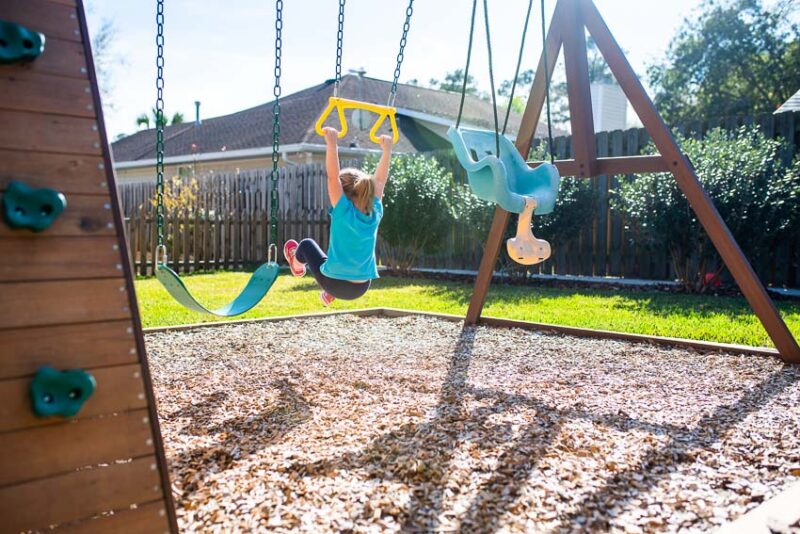
Backyard play areas are designed for children of all ages, with various activities appealing to different age groups.
Backyard play areas create safe opportunities for children to learn new skills. Moreover, it helps them stay physically active and have social interactions with other children.
Children learn by playing, and because they are developing so quickly, they need adequate stimulation for healthy growth. They are more likely to develop their full potential by spending time outdoors playing and having fun.
The Benefits of Having a Backyard Play Area
Getting your kids to play outside isn’t always easy, but it’s much easier when you have amazing play areas in the backyard to entice them. Besides adding visual appeal and increasing your home’s property value, a backyard play area has many other benefits.
Backyard play areas promote physical activity, which helps your child develop motor skills and strong bones and muscles. It also decreases the likelihood of childhood obesity, mental health issues, anxiety, and depression.
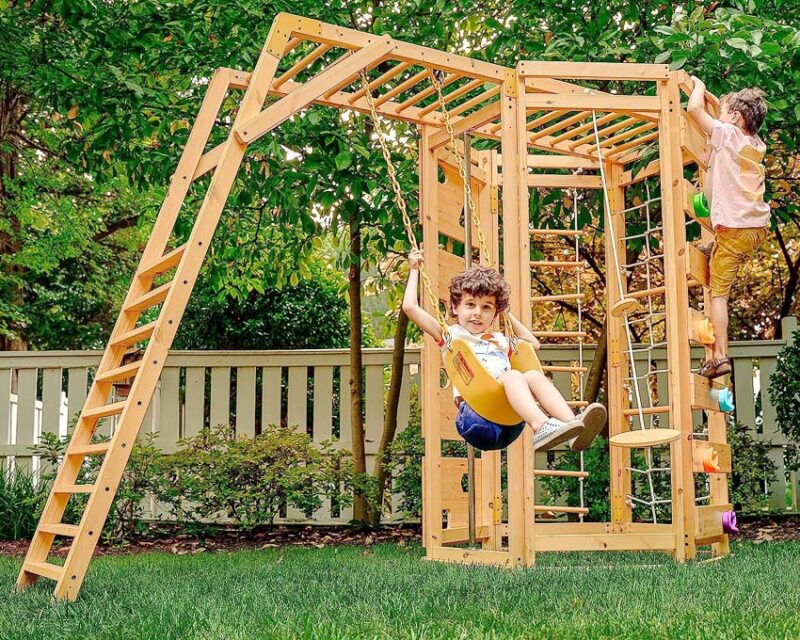
Spending time outdoors helps people generate positive feelings, like calm, peace, and joy. A properly designed play area will help children develop cognitive and fine motor skills, and it will also build self-confidence by trying new things.
Actively engaging with other children in outdoor play strengthens your child’s social skills. This is an important part of being a healthy child.
Just like exercising your muscles makes you stronger, using your imagination makes you more creative.
Playing with natural materials like rocks, sand, water, and wood stretches the creativity muscle. Furthermore, it stimulates a child’s imagination, helping them generate unique ideas.
Inspirational Ideas
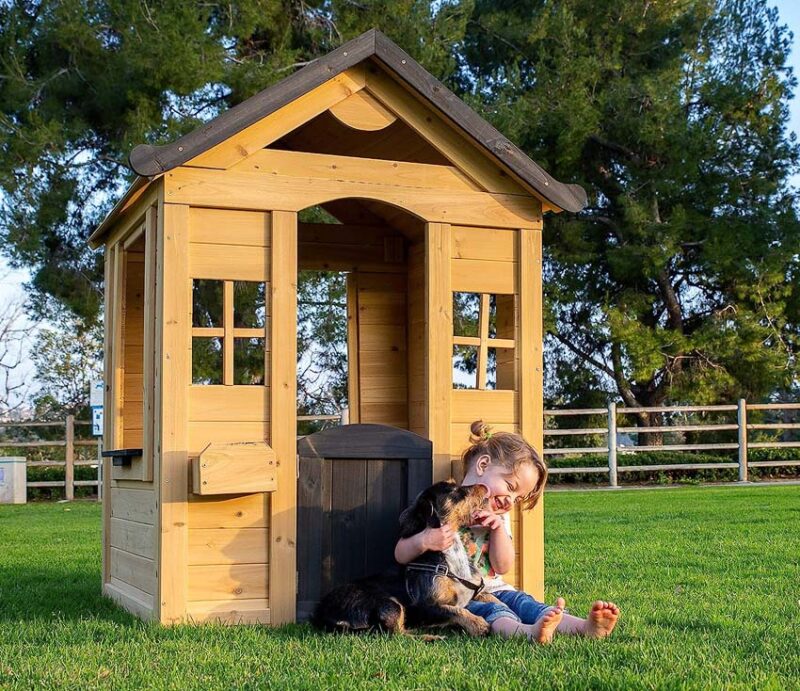
There are many different concepts to choose from when designing a backyard play area. Use traditional playground equipment that everyone is familiar with, and include unique and innovative ideas to add an extra layer of fun.
Traditional Backyard Play Area Concepts
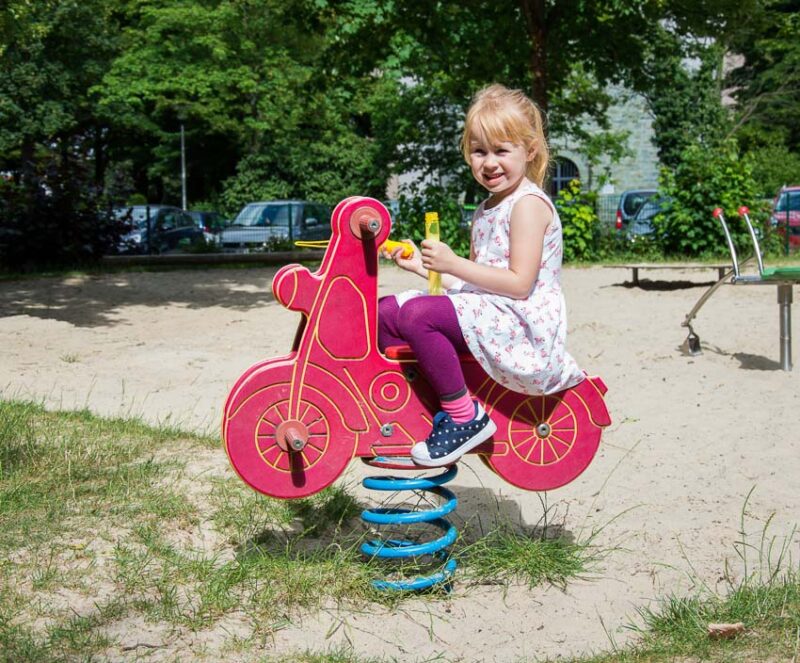
Traditional playground equipment has been around forever, and there’s a reason for that. Familiar pieces of equipment get a lot of use and are the foundation of any backyard play area.
Include at least a few of the following features in the play area in your backyard:
- Swing sets –available in various heights and styles, including belt, buckle, baby, and porch-style swings.
- Slides –they come in all different shapes and sizes and can be standalone or part of a play structure.
- Ladders –it’s fun for kids to have different options to get to the top of the play structure, and ladders come in many different styles, including rope ladders and steps.
- Playhouses are often located at the top of the play structure, but they can be just as fun at ground level.
- Climbing walls and jungle gyms –you can use stand-alone climbing equipment or incorporate rock walls, ropes, nets, and metal structures into the rest of your play structure.
- Monkey bars –another playground staple, also called a horizontal ladder.
- Spring riders –rocking or bouncy riding devices that can seat one to four passengers.
- Sandbox –all kids love sandboxes, and they are a great place to use toy trucks, build castles, and dig.
Unique and Creative Ideas for a Play Area
Use these DIY outdoor play area ideas on how to make a backyard play area unique. You can add new features to keep your children interested as they grow.
Activity and Game Panels
Activity panels make a playground even more exciting for kids. Choose from several types, including standalone tic-tac-toe boards or spelling walls.
Outdoor Music Play Equipment
Music panels are another fun feature, and you can also include standalone music equipment like large outdoor drums, xylophones, and percussion instruments.
Outdoor Play Kitchen
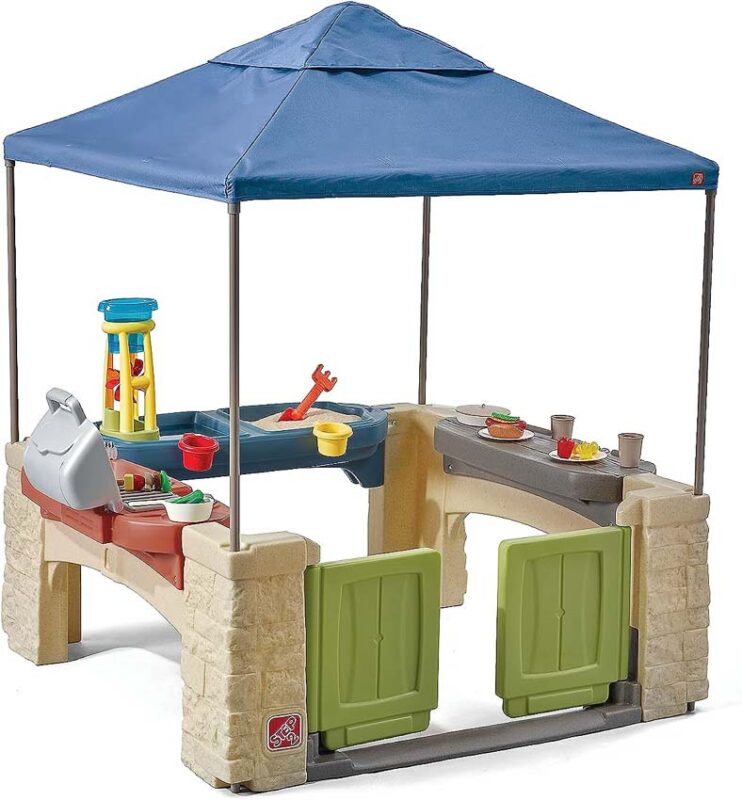
Children will spend hours in an outdoor mud kitchen, making nature soup and mud pies.
Obstacle Course
One of the fastest-growing sports in the world is obstacle course racing. You can time your kids to see how quickly they can make it through the course.
Outdoor Water Labs
Set up an outdoor water lab using plastic funnels, pipes, and containers, and leave it up for your kids to enjoy all summer. Make your own or purchase sand and water sensory tables and troughs that connect to a hose and are ready to use.
DIY Backyard Play Areas: Tips and Tricks
Building your own backyard play area will provide your children with hours of fun and save you many trips to the park. Even if you purchase a premade playground set, a lot of setup is required. Therefore, why not save money and learn how to build a play area in your backyard on your own?
Getting Started
Before starting your backyard play area, choose the right location and research to ensure you follow applicable building codes. Here are some tips for getting started.
Location
Choose where you want your playground to be located. It should be close to the house and visible from a seating area. This is so you can supervise your children while playing. Depending on the size of your yard, select a location on flat ground with 10 to 20 feet of open space around the playground.
Ideally, you should fence your backyard. What’s more, the play area should be far away from dangerous obstacles like wires, low-hanging limbs, rocks, bricks, concrete, and tree stumps.
Permits and Building Codes
Some municipalities may require you to obtain a building permit if your structure is over a certain size or height. Before planning your backyard play area, check with your local planning or permitting office.
Or consult your homeowner’s association for further guidance.
Use Color
It’s not a secret that children love colors, and vibrant colors will make your playground seem more fun. Even if you build your play structure out of wood, there are plenty of opportunities to use color. They include colorful rubber mulch, slides, and swings.
Materials
You can build your outdoor play area for kids using wood, metal, plastic, and fiberglass materials. Pressure-treated wood is long-lasting and safe for children’s playhouses but less attractive than naturally rot-resistant lumber like cedar or redwood.
Protective Surfacing

The “floor” of your outside play area can be sand, artificial grass, or wood chips. However, you can prevent serious head injuries from falls using a protective surface like loose-fill materials or rubber mulch.
Rubber mulch is one of the best floor materials for playgrounds because it doesn’t attract insects and it provides some cushion for falls. It can also be used with an aromatic binder and poured in place.
Safety Considerations

Creating a safe play area for your children is critical. You can’t assume that all premade playgrounds are safe for children, and when you DIY a backyard play area, you need to pay special attention to the features you add.
Here are some safety tips to follow when building a backyard play area for kids:
- Use a shock-absorbing material extending at least six feet from the play structure to cushion falls.
- Make sure that there is adequate space around all features, especially swing sets and slides. To calculate the space required for a swing, measure the height of the bar from which it is suspended and double it.
- Keep quiet and active play areas separate by using barriers or guardrails.
- Face slides away from the sun during the hottest part of the day to prevent burns.
- Get rid of poisonous plants in your backyard, especially if you build a mud kitchen.
- To prevent entrapment, all openings should be smaller than 3½ inches or larger than 9 inches so children can safely slide through without getting their heads or other body parts stuck.
- Use guardrails on all platforms 30 inches or more off the ground.
- Remove drawstrings on children’s clothes to prevent strangulation.
- Close “S” hooks to prevent entanglement and strangulation.
Budget-friendly DIY Projects
There are many budget-friendly options for DIY backyard play areas. So, don’t let the amount of money you have to spend get in the way of creating a fun and entertaining area for your kids to play.
Use your imagination, and upcycle or recycle items you already own to create obstacle courses, splash pads, or a fun outdoor lounge for kids.
Step-by-Step Guide to Building a Backyard Play Area
A prefabricated backyard playground costs about $5,000, but you can build one for much less. Start with the basics and add to them as your children grow.
Constructing a Safe and Fun Backyard Play Area
Build a basic play structure with pressure-treated lumber, and add pre-made playground equipment, including slides, swings, and ladders.
Planning
Choose the equipment for your backyard play area, then draw a design. Obtain approval for your outside play area before you start construction.
Lay Out
Measure and mark the area for your play structure, ensuring adequate space around the entire play area. If you’re building a play structure, use stakes to mark where the posts will go and diagonal measurements to ensure the layout is square.
Level the Area
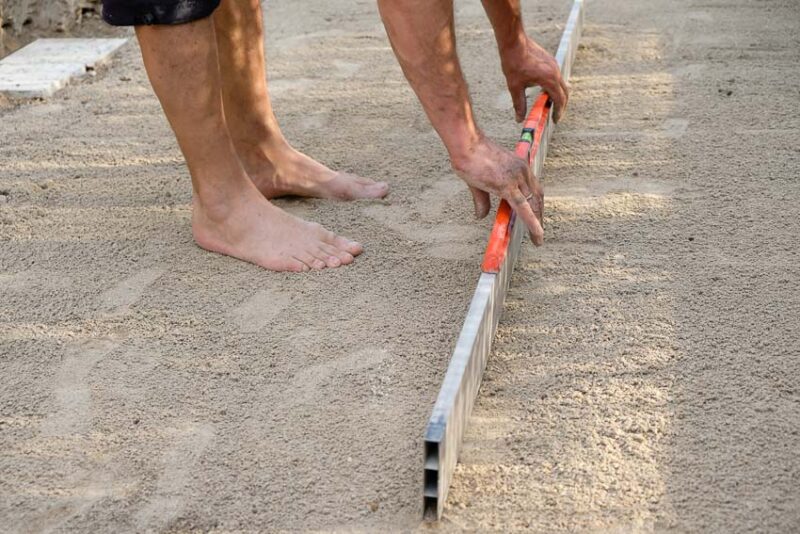
You may need to do some excavation to ensure the area is level. If you’re planning on using a surfacing material, remove the grass before you start construction.
Install Posts
Dig holes to set the posts, placing them well below the frost line. You also need at least four inches to place gravel at the posts’ base. Set the posts in concrete, using bracing to keep them plumb and square until they are set.
Install Horizontal Braces
Use 2×10 lumber for horizontal braces and attach them with bolts at the right height for your playground equipment. For safety reasons, ensure the bolts’ ends do not protrude.
Build the Platform
Use joist hangers to attach pressure-treated joists spaced 16 or 24 inches apart, then install composite decking for the platform.
Add Equipment and Safety Features
Install the playground equipment you selected to your play structure, and then add guard rails, handrails, and ladders to your play structure.
Finishing Touches
Finish your backyard play area by adding surfacing materials and painting or staining the wood. Add more play features as your budget allows.
FAQs About Backyard Play Areas
What Safety Measures Should I Consider?
There are many safety hazards for children when playing outdoors, so it’s important to supervise them at all times. Ideally, you should fence your backyard play area.
You should also pay special attention to details to prevent things like protruding bolts and strangulation and entanglement hazards.
How Much Space Do I Need for a Backyard Play Area?
You need a minimum of six feet around all play structures, but it’s better to have 10 to 20 feet of clear space for kids to run and play around the backyard play area.
Can I Build a Backyard Play Area on a Budget?
You can build an outside play area on any budget. Have a good long-term plan, start small, and add to your playground equipment whenever you can.
What Types of Play Equipment are Suitable for Backyard Play Areas?
Traditional playground equipment like swings, slides, and playhouses are the most common outdoor play areas for kids. If your child is more active, you can experiment with other fun activities, like obstacle courses and outdoor kitchens for kids.
How to Maintain and Clean a Backyard Play Area?
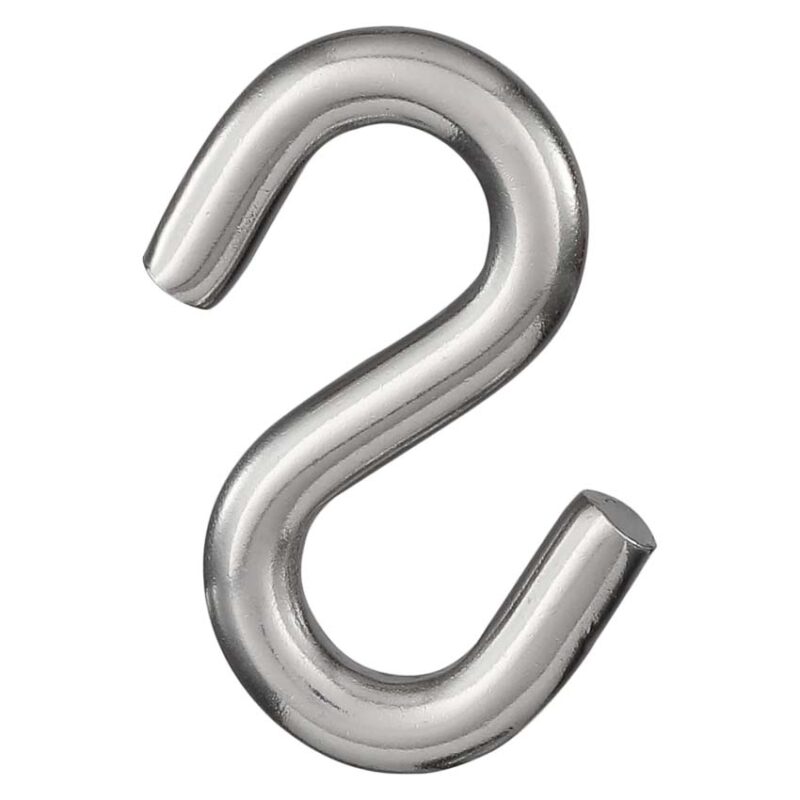
Keep your backyard play area safe for children by maintaining it. Check and tighten hardware as needed, and look for loose or damaged equipment. Close “S” hooks, which can lead to entanglement and strangulation, and ensure your yard is free of poisonous plants and harmful insects.

